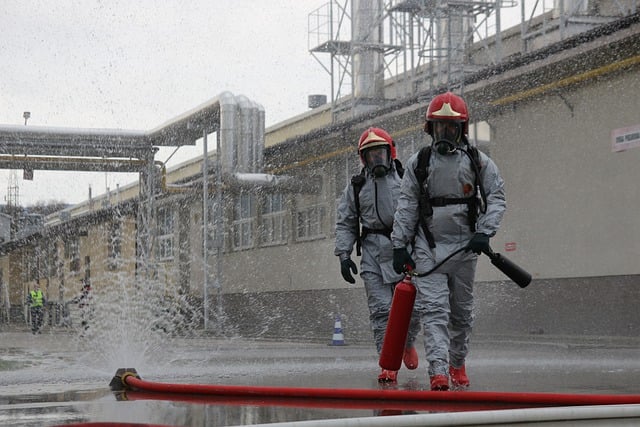Selling a fire-damaged home in California requires strict adherence to disclosure laws, prioritizing transparency and buyer protection. Sellers must comprehensively disclose all known fire damage, structural issues, and potential hazards, backed by documentation or estimates for repairs. Non-disclosure can lead to legal disputes and financial consequences, emphasizing the need for honest communication. A strategic approach involves professional assessments, remediation by licensed contractors, and visual documentation to foster trust and ensure a successful sale while adhering to state regulations.
When preparing to sell a fire-damaged home in California, understanding property disclosure requirements is crucial. This guide breaks down essential aspects, including what constitutes a fire damage disclosure and the legal implications of non-disclosure. We’ll walk you through the steps to prepare your home for sale, ensuring compliance and maximizing your chances of a successful transaction. By following these guidelines, folks navigating the process in California can navigate it with confidence, transforming a challenging situation into a smooth sell.
- Understanding Property Disclosure Requirements in California
- What Constitutes a Fire Damage Disclosure?
- Legal Implications of Non-Disclosure
- Preparing Your Home for Sale After a Fire
Understanding Property Disclosure Requirements in California

In California, selling a fire-damaged home comes with specific property disclosure requirements designed to protect buyers and ensure transparency. These regulations demand that sellers disclose any known damage or defects in the property, including those caused by fires. This includes structural issues, as well as potential hazards from smoke, water, and other fire-related impacts. A comprehensive list of all such disclosures should be provided to potential purchasers before any sale is finalized.
When a home has sustained fire damage, sellers must clearly communicate the extent of the previous fire, its cause, and the subsequent remediation efforts. This transparency helps buyers make informed decisions about purchasing a property that may still require extensive repairs or renovations. California’s strict disclosure laws aim to foster trust between sellers and buyers, especially in situations where homes have experienced significant events like fires, ensuring all relevant information is clearly communicated throughout the selling process.
What Constitutes a Fire Damage Disclosure?

When considering the sale of a fire-damaged property in California, understanding what constitutes a comprehensive fire damage disclosure is paramount. Such a disclosure should include detailed information about the extent and nature of any fire-related damages present within the home. This encompasses structural elements like walls, floors, ceilings, and roofs, as well as personal belongings that have been affected by smoke, heat, or water used during extinguishment efforts.
A thorough fire damage disclosure should also highlight any known safety issues resulting from the incident, such as damaged electrical wiring or compromised structural integrity. Additionally, it should mention any previous repairs or renovations carried out due to the fire and provide documentation or estimates for these works. Sellers are legally obligated to disclose this information to potential buyers in California, ensuring transparency throughout the selling process.
Legal Implications of Non-Disclosure

When selling a fire-damaged home in California, failure to disclose material information can have significant legal implications. The state has strict property disclosure laws designed to protect homebuyers and ensure transparency. If a seller omits or misrepresents details about previous damage, such as a fire, it could be considered fraudulent or negligent. This is especially true if the fire-related issues haven’t been properly remedied, as buyers have the right to know about potential hazards or structural concerns that might impact their decision to purchase.
Non-disclosure can lead to legal disputes and financial consequences for the seller. Buyers may seek damages or even attempt to rescind the sale if they discover the hidden fire damage after moving in. To avoid these pitfalls, it’s crucial to be comprehensive and honest during the disclosure process, disclosing any known issues related to fires or other hazards that could affect the property’s safety and value.
Preparing Your Home for Sale After a Fire

After a fire, preparing your California home for sale requires careful consideration and strategic actions. The initial impact of a fire leaves behind not just physical damage but also emotional scars, making it essential to address both aspects systematically. Begin by assessing the extent of the damage; consult with professionals to understand what can be restored and what needs replacement. This step is crucial in accurately disclosing potential issues to prospective buyers.
Next, focus on safety and cleanliness. Ensure all hazardous materials, such as smoke and water damage, are properly addressed. Repairs should be done by licensed contractors who follow local building codes. Documenting the remediation process through before-and-after photos or videos can be beneficial during the selling phase. This transparency helps set expectations and fosters trust with potential buyers interested in purchasing a fire-damaged home in California.
When selling a fire-damaged home in California, adhering to strict property disclosure requirements is paramount. Understanding what constitutes fire damage and its legal implications can protect both sellers and buyers. By preparing your home thoroughly, you not only enhance its resale value but also ensure a smooth transaction process. Remember, transparency in disclosing fire damage history is key to building trust with potential buyers in the California real estate market.






